
The company caught on camera here were under shell fire 20 minutes later - we don't know who survived
by Allan Fish
(UK 1916 73m) DVD2
We’re here because we’re here…
p William F.Jury d none ph J.B.McDowell, Geoffrey A.Malins ed Geoffrey A.Malins, Charles Urban m Laura Rossi (DVD reissue)
Here is a unique film in this selection. Take one look at the credits; there is no director listed. It’s not because he wasn’t known, but rather because there was no director as such. The real auteurs here, if tradition dictates we must have them, are the two unheard of gentlemen given photographic credit. In the full listing of selections for this book, I list them as the directors, but if there really were directors for this film, they were the accursed brass hats who made the orders and never got within range of a field artillery gun. History would rather call them mis-directors.
The subtitle is “original pictures of the British Army in France“, and essentially that’s what it is. We’ve all seen footage of the Great War, grainy, flickering and faded flashes on TV in November, but in many cases have no idea where they came from. In many cases, the answer is right here. We see the preparation for, a brief re-enactment of, and the aftermath of the fateful attack of 1st July 1916. Cynical modern day commentators have been grossly unfair to the film for the brief re-enactments of the initial charge, with hardly any men actually dying and no real sense of the unparalleled slaughter of that summer’s day. Yet in an age where our media is saturated with fake, re-enacted footage, and we say nothing, surely attacking the makers of Somme for doing so is churlish indeed. To shoot the real attack would have been so life-threatening as to beggar belief. They were in many ways already being foolhardy getting so up close and personal to the action, taking their camera to within a couple of hundred yards of the front line trenches, taking time to stop off at sunken roads where troops gather their strength prior to another onslaught (in one group’s case, perhaps less than half an hour before their death).
It’s that most crucial of realisations that strikes home with the deepest resonance. We can all watch the films of Feuillade, Griffith, Gance and their contemporaries and wistfully acknowledge that everyone seen on screen has long since passed on. Yet in the case of Somme, we are filled with a sense of urgency, the sense that many of these men featured not only are not still alive, but would not have lived as long as the movie’s premiere and, in some cases, not any longer than a few minutes. Is it any wonder that the film was selected for UNESCO’s Memory of the World register?
Some still won’t have it that much of the footage was shot amongst real trenches and troops, and to them I not only offer hearty disdain, but ask them to look closely at the one single-most telltale sign of authenticity. Look at the faces of the soldiers, and see how you can actually see their faces. So many of them are looking at the camera, or turn to look at the camera, in a way no act of fakery could recreate. The camera’s presence in their midst doubtless rather surreal to the battered troops, and it’s a surrealism mirrored back to the audience ninety years on, as we watch on, numbed, by the immediacy of the footage, the clouds of earth from shell and mine explosions and the sense, indeed the very aroma, of impending death. In no other film are there so many shots of such apocalyptic desolation as the camera looks out over No Man’s Land.
And just pay attention to that camera. This is 1916, cameras were largely rigid, static, but the toys of our two cameramen are constantly on the prowl, through long, poetic tracking shots and pans of bombarded devastation. In every sense of the word, this film moves. It leaves one feeling somewhat inadequate and in awe of the men depicted, so that when they wave and cheer towards the camera in the final reel, one feels like saluting them. And that, of course, is very much the intention, for this is not merely a historical document but a piece of propaganda for the folks back home. Yet it’s also a window into hell itself, perhaps dirty, but we can still see and feel the absolute futile despair. Forget charges of datedness, for sometimes historical context takes precedence; no other film so merited the simple two word epitaph, much overused – in memoriam.



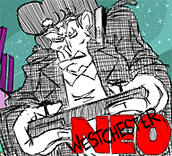



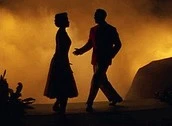
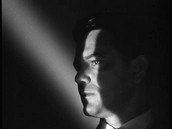

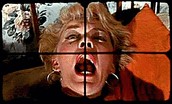

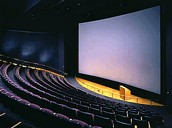

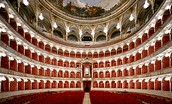






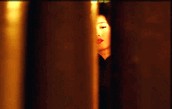

 Click on names for archives
Writers/Founders
Click on names for archives
Writers/Founders
Extraordinary review of a film few have seen. You’re bringing this to everyone’s attention is simply revelatory. Great pictures choses too.
Interesting early film; will have to check this out–yes a great review, that’s not in question.
I wish I would have had an opportunity to see this film, as I surely would have liked to contribute. The review here is awesome.
Well, I have read a lot about this film, but I never seen it. I guess this is one of the last holdouts. Engrossing review in every respect.
I recently revisited Saving Private Ryan (caught up the D-Day 65th Anniversary fervor!) and then saw Battle of the Somme a couple of days later. It is instructive to note just how incomparably superior Battle of the Somme is to Saving Private Ryan in most ways. It is furthermore ironic to reflect on the fact that the older film started out as a traditional propaganda film (to put things a little bluntly) and yet ended up being a far more subtle work and certainly intelligent work whereas Saving Private Ryan for all its technology-abetted ‘authenticity’ is really a far more conventional exercise in old Hollywood ‘war truths’.
Rosenbaum chides Spielberg for essentially providing the ultimate compendium of war movie cliches. This is a bit unfair. Judging by one of his interviews Spielberg is almost in the Leone mode of Once Upon a Time in the West here where he really wants to recycle his lifelong experience of ‘cinematic war’ by way of this film. The effort is not as obviously allusive or referential as with the Leone work but this seems to be Spielberg’s goal at a certain psychological level. I would recast Rosenbaum’s objection. It is a little problematic to approach the war film as a kind of ‘compilation effort’ the way Leone does with Westerns. The ethical stakes are completely different with any representation of war.
In some ways Battle of the Somme reminds me of Jancso’s stellar work, the Roundup. In each case an open space is carved up with columns of people and really ‘re-defined’ in this fashion each time. In other words the space seems almost nondescript without ‘people’ interceding to provide the viewer with contours and so on. But this is only one among the film’s visual strengths. There are extraordinary shots of soldiers marching in columns toward the camera, in the background and so forth that would have pleased Kurosawa. Allan quite rightly suggests that this film is constantly in motion. But there are also cavernous framings in the trenches that did not become standard for Hollywood till decades later and that offer wonderful counterpoints to the more wide angle shots. My favorite moment in the film involves a canon that is shown firing and then each time. It is a rare example of purity in the medium.
Overall there is a lightness of touch that is brought to the proceedings. This is not yet the Somme of popular myth. This is the battle in actual progress. The ‘makers’ are actually reporting from the frontlines. This gives the movie an immediacy and freshness that has stood the test of time marvelously.
On the actual controversy pertaining to the staging of certain sequences I could not excuse all of it inasmuch as the film-makers were claiming everything to be merely ‘documentary’. There is a truth claim involved here and one has to be sensitive to it. One could not for example recreate a mushroom cloud and pass it off as Hiroshima on the grounds that one could never have filmed the real thing. At the same time I find it somewhat delightful that the ‘fictional’ that is a part of every ‘documentary’ (the documentary/feature film divide is quite arbitrary in certain ways.. in any documentary there is a ‘story’, there is selection, there are choices; even if a camera were just left rolling for 90 min on a particular location or on a group of people there would still be the ‘perspective’ of the camera angle and the location chosen on a given site.. Kiarostami’s Five explores this issue..) is integrated into the body of the film. There is not complete ‘accuracy’ here to the extent that not everything actually occurred the way the filmmakers depict it but this scarcely belies the truth of the overall work.
Allan has done us a service in highlighting this film. The review is also an excellent one. 90 years after this film was made it is hard to think of too many works in the genre to match this one, let alone outdo it.
I can’t say much to this, Kaleem, except the comment is better than the review, and the film deserves it in every way or shape possible. It’s one of the great British silent movies, and most unknown. Ironic you resurrect this thread tonight, as I’ll be watching my newly acquired DVD of The Life Story of David Lloyd George from 1918 later tonight.
As for Saving Private Ryan, let’s not go there, two technically brilliant sequences, a plot straight from cliché and “another troop in peril picture volume IV”
That’s much too kind Allan. Your review is a very fine piece. On Saving private Ryan I more or less agree with your characterization. Always felt that the real war movie that year was Thin Red Line but one that got sadly ignored with all the hype of the other work. Of course no one said Mallick was as palatable as Spielberg!
Look forward to your review of the Lloyd George work..
Kaleem, that was a truly spectacular resurrection here! You make some interesting disclaimers there with Rosenbaum’s contentions too! Needless to say I like that Spielberg quite a bit more than Allan does, but fair enough.
The Malick film is better though, of course.
A typo above.. meant to say ‘a cannon that is shown firing and recoiling each time’.. the ‘recoil’ comes off beautifully..
Sam: I don’t mind Private Ryan in the sense that it’s engaging enough. But the brilliant opening sequence should really have led to a better film.
Plato has a superb thought somewhere… “only the dead have seen the end of war.”
this seems like some film. I have never seen it.
this great review reminds me of the artistry in war poetry (I have a book of WWI war poetry that is breathtaking). Poets like Seigfried Sassoon, Wilfred Owen, ect. The book I have dates from the 20’s so it’s the first ‘wave’ of popularity and features a moving afterword that reveals the fate of each poet in the book, many times (like this film it seems) died days after composing moving poems about their ultimate fate. They are mostly chaptered off by fighting country so it’s interesting to see the overall education of gentlemen in those times, they are well versed in mythology, scripture, and culture. I especially like the British examples.
you guys seem like a lot that would get quite a bit out of these books as I did.
We did a series of pieces to commemorate the 90th anniversary of the Armistice last November, Jamie, probably before your finding the site. There were reviews of numerous similarly themed films – Barbed Wire, Paths of Glory, All Quiet on the Western Front, Les Croix de Bois, Westfront 1918, Verdun, La Grande Illusion, TV’s The Great War (the supreme retrospective document), etc…
well i just looked for ‘Battle of Somme’ online and found it. when it arrives and I watch it, I’ll comment again.
In the meantime here is one of my favorite poems from the book:
‘Suicide in the Trenches’ by Siegfried Sassoon 1918.
I knew a simple soldier boy
Who grinned at life in empty joy,
Slept soundly through the lonesome dark,
And whistled early with the lark.
In winter trenches, cowed and glum,
With crumps and lice and lack of rum,
He put a bullet through his brain.
No one spoke of him again.
You smug-faced crowds with kindling eye
Who cheer when soldier lads march by,
Sneak home and pray you’ll never know
The hell where youth and laughter go.
“He thought that in the beauty of the world were hit a secret. He thought the world’s heart beat at some terrible cost and that the world’s pain and its beauty moved in a relationship of diverging equity and that in this headlong deficit the blood of multitudes might ultimately be exacted for the vision of a single flower.”
from All the Pretty Horses (Cormac McCarthy) as quoted in Dekter Filkin’s the Forever War.
Ha! And both of these passages are magnificent! Jamie you didn’t waste any time with BATTLE, although you should have contacted me immediately as I do have a copy, which was sent to me by Allan. I have rarely seen a young man like youself with such boundless enthusiasm! Wow!
Kaleem, that passage is really a boost for ALL THE PRETTY HORSES.
Jamie:
Allan’s review for Vidor’s THE BIG PARADE attracted one of our most treasured comments, from the world-famous silent film composer, Donald Sosin. Check here:
Kaleem I adore that passage. I read a lot literature, but I’ve never gotten the ‘push’ to decide on what McCarthy to start with. I think you may have given me one.
BTW, currently I’m reading DeLillo’s ‘Mao II’. sort of on subject here. marvelous stuff.
Jamie: Mao II is superb and simply one of my favorite de Lillo works along with White Noise and Libra. For all its epic sweep I perhaps liked Underworld a little less.